Destination: Australian Capital Territory
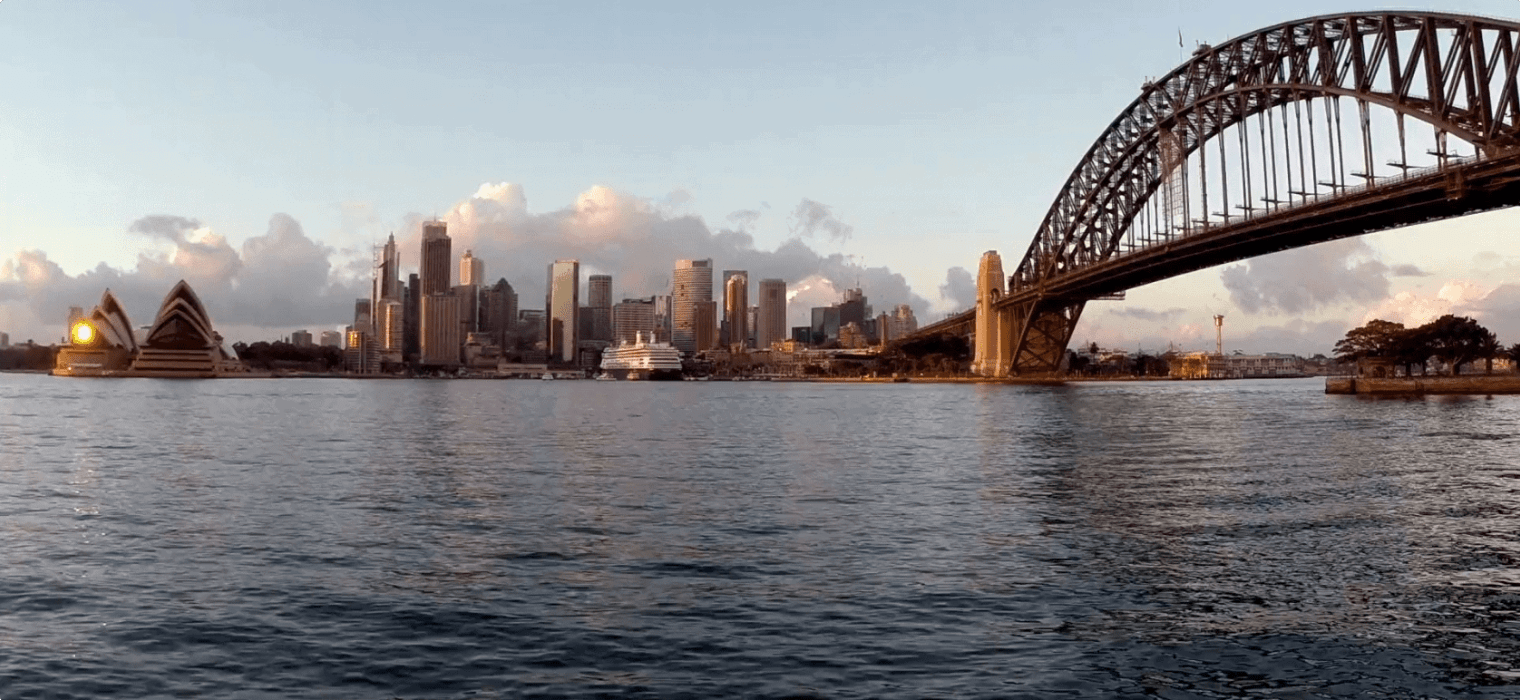
Small group tour of Australian Capital Territory
Odyssey offers an authentic and a relaxed small group tour to Canberra, with a varied adaptable itinerary, that moves from Sydney to the capital via the southern highlands and the south coast and back.
Canberra, the capital city of Australia, can be found in the Australian Capital Territory, some 240 kilometres southwest of Sydney. Canberra lies on the Molonglo River, a tributary of the Murrumbidgee. Lake Burley Griffin divides the city into two parts, with the Canberra Civic Centre in the north and parliament house on the southern side. The territory, self governing since 1988, has a population of around 426,000 and Canberra is Australia‘s largest inland city.
ACT Tours
Crafted Tours for Mature World Travellers

7 days
Nov, Feb, Mar, Apr, Sep +1Small group tour to Southern Highlands and Canberra
Visiting Australian Capital Territory, New South Wales
Explore and learn on an escorted small group tour of key places to visit in NSW including the Southern Highlands and Canberra. Program for mature and senior travellers limited to 12 people for couples and solo travellers.
From A$3,750 AUD
View TourHistory
When the Australian states federated in 1901 it became necessary to decide on the site for a capital city. The two most populous states, New South Wales and Victoria were old rivals and both wanted the capital to be located in their state. A number of different sites were suggested but eventually, in 1908, a site was selected diplomatically situated between Sydney and Melbourne. In 1911 the Commonwealth Government created the Federal Capital Territory and on the 12th of March 1913 the the city was officially named Canberra, from an Aboriginal term meaning meeting place. The American architects, Walter Burley Griffin and his wife, Marion Mahony Griffin, won an international competition to design the new city, and in 1927, with the first sitting of the Australian government in its new capital, Canberra took over from Melbourne as the seat of national government.
Before it was chosen as the site for the nation’s new capital, Canberra already had a long history. The Ngunnawal are the traditional Aboriginal inhabitants of the Canberra region. When Europeans first moved into the region the Ngunnawal had already occupied the region for at least 20,000 years. This was a harsh environment and required skilful guardianship by the traditional custodians of the land. People normally moved around in small family groups but, on occasions, large groups came together to take advantage of seasonally abundant resources such as the Bogong moth and the Yam Daisy. Their hunter-gatherer lifestyle continued into the early 19th century when Europeans, with their sheep and cattle, moved into the area. The arrival of introduced diseases, such as small pox and measles, quickly affected Aboriginal numbers. Graziers, claiming ownership of vast tracks of land, also had an impact on traditional movement in the region. The Ngunnawal workers for the pastoralists and the traditional lifestyle could no longer be maintained. The Ngunnawal, however, have a continuing connection with the region, and in recent years have become increasingly involved in local and national affairs.
Europeans first settled in the region in 1823 when Joshua John Moore established a sheep station at what is now Acton, the site of the National Museum of Australia. Robert Campbell’s station was the second established in the region. Campbell, a wealthy Scottish merchant, was given a grant of 4,000 acres and chose a site at Pialligo where he erected a substantial residence which he named Duntroon. Duntroon became an important grazing property and remained with the Campbell family until taken over by the Commonwealth in 1910 as the site for the Royal Military College. A visit to Brundell’s Cottage, built in the 1860s on the Duntroon estate, is included in an Odyssey small group tour. Yarralumla, now home to Australia‘s Governor General, was purchased by another member of the Campbell family. Further settlement occurred near the Murrumbidgee River in 1834 with the development of the Lanyon property using convict labour. Lanyon, and nearby Tuggeranong, homesteads are now open to the public and the person interested in Australian colonial history will be fascinated by the history revealed at these sites visited on a guided tour. William Farrer, famous for his experiments in developing a rustproof wheat, also settled in the region, and the National Museum devotes a section to his invaluable discoveries.
St John the Baptist Church, built of local bluestone and sandstone, became a centre for European life in the area after it was built in the 1840s, and consecrated in 1845. A schoolhouse, adjoining the church, was also opened in the early 1840s. The church, its graveyard and schoolhouse are a reminder of Canberra‘s pioneering farming families and just a short walk from Blundell’s Cottage. All of these will be included on our guided tour.
This quiet farming community underwent a change when it was chosen as the nations capital. Growth was initially slow. Although construction began in 1913, work was interrupted by the first world war and again by the Great Depression of the 1930s. By the time the second world war began in 1939, Canberra was still little more than a small town with a big plan. At the end of the war Prime Minister Sir Robert Menzies regarded the state of the national capital as an embarrassment and during his time in office the the development of the capital sped up rapidly. The National Capital Development Commission was formed in 1957 and ended four decades of dispute over the shape and size of Lake Burley Griffin, the centre piece of the architect’s design. Construction of the lake was finally completed in 1964 and the population of the city grew by more than 50% in every five year period between 1955 and 1975. On 9th of May 1988, a larger and permanent parliament House was opened on Capital Hill and the Commonwealth Parliament moved into its new premises. Canberra continues to grow and is now more than simply a centre of government. With just under a third of Canberrans employed in the public sector, tourism, accommodation, construction, retail and food are also major employers.
Travelling to Canberra and the ACT.
Canberra, almost half way between Sydney and Melbourne, has an international airport with direct flights from all of Australia‘s capital cities. There is also a train link directly with Sydney and it is possible to get from Melbourne to Canberra by train and bus link, but it takes about 13 hours. A number of coach companies also offer services between Melbourne and Canberra and Sydney and Canberra. However, unless you have a car, Canberra can be difficult to negotiate, and the couple or solo traveller may find that a small group tour allows them to explore the city’s attractions in comfort.
Odyssey’s small group tour to Canberra allows participants to explore the city with the benefit of a guide. Not only do we make travel easier, we provide a varied itinerary that covers many of the capital’s lesser known attractions. We visit the National Gallery and the brilliant Portrait Gallery as well as the Australian War memorial and the National Museum. On a walking tour around the lake we visit the city’s oldest church, dating back to the 1840s, and the oldest cottage in the city. Although it only opens on weekends, a visit to Calthorpes’ House provides a window into an almost forgotten world. Built in 1927, this house, still in original condition, offers a window in middle class life in the early years of the nation’s capital. If you have been inspired by the magnificent Leonard French stained-glass windows at the National Library, you might like to visit the Canberra Glassworks. Watch professional glass artists at work and discover more about the beauty and versatility of glass on a visit to the works, housed in the historic Kingston Power House.
There are a number of ‘must see’ sites in Canberra. On a visit to the new parliament house, dug into Capital Hill, there are a couple of surprising exhibits. Did you know that the building houses one of only four known 1297 copies of Magna Carta? The Great hall is embellished with a twenty metre long tapestry inspired by an Arthur Boyd painting of a eucalypt forest and the grey-green marble columns of the foyer also represent a native forest. It is also possible, on days when the house sits, to watch the Australian Government at work from the public gallery. The National Gallery concentrates on its stunning collection of Australian art, but world art is not neglected with a fine Asian collection and pieces from around the world, including the controversial ‘Blue Poles’ by Jackson Pollock. The Australian collection ranges from traditional indigenous art (including burial poles from the Tiwi Islands), through works from the colonial period by the likes of Tasmanians John Glover and Thomas Bock, to significant 20th century works by people such as Sidney Nolan and Arthur Boyd. The 19th century is also well represented with well known works by Grace Cossington Smith, Margaret Preston, Tom Roberts and Arthur Streeton.
A visit to the Namadgi National Park provides an introduction to its rich Ngunnawal Aboriginal history. Archaeological sites in the park attest to Aboriginal presence in the region for at least 21,000 years. This was also an important gathering place to neighbouring clans from the Ngarigo, Wolgalu, Gundungurra and Wiradjuri nations. You can also find out more about Aboriginal culture at Tidbinbilla with a ranger guided activity or walk. Namadgi is also home to a variety of native birds and animals including emus, swamp wallabies, wombats, and echidnas. On a cultural heritage walking tour at Tidbinbilla, you can expect to learn much about the Aboriginal history of the area. As traditional custodians of Tidbinbilla, the Ngunnawal have lived and gathered in the valley since time immemorial. Visitors have unique opportunities to learn about culture and history by participating in cultural tours with local Ngunnawal traditional custodians. It is also possible to see koalas and emus in their natural settings on a walk through Tidbinbilla.
A small group tour, with Odyssey, that includes a visit to Canberra and the ACT, allows the senior passenger the opportunity to discover the nation’s capital in a stress free environment. The couple or solo traveller on a guided tour can relax and visit the many attractions that the nation’s capital has to offer, without having to cope with the territory’s public bus network.
Odyssey’s collection of Australia tour packages with a tour manager enable you to explore each state with Odyssey’s escorted tours Australia 2021 portfolio as a city based tour or a Australia holidays package into the Western Australia outback of the Kimberley or South Australia‘s Flinders range or just spend a week on holiday in Hobart learning about a range of subjects on Odyssey’s Summer Schools tour package. This collection of some 70 scheduled small group holiday departures provides plenty of choice for an Australian holiday. You can make your booking direct for your Australia escorted tour with us or via your travel agent or travel consultant.
Tours in Australia
Small group tours throughout Australia

7 days
Nov, Feb, Mar, Apr, Sep +1Small group tour to Southern Highlands and Canberra
Visiting Australian Capital Territory, New South Wales
Explore and learn on an escorted small group tour of key places to visit in NSW including the Southern Highlands and Canberra. Program for mature and senior travellers limited to 12 people for couples and solo travellers.
From A$3,750 AUD
View TourArticles
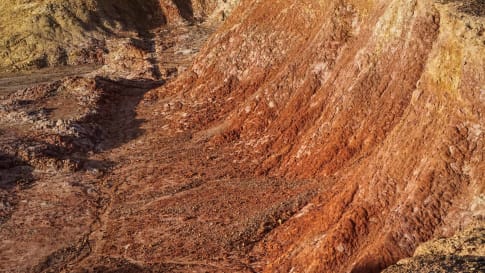
Ancient Aboriginal trade routes of Australia
Ancient Aboriginal trade routes of Australia Trade was a central part of life for Aboriginal people prior to the British settlement of Australia. Trading routes criss-crossed the nation, dispersing goods, information, technologies and culture thousands…
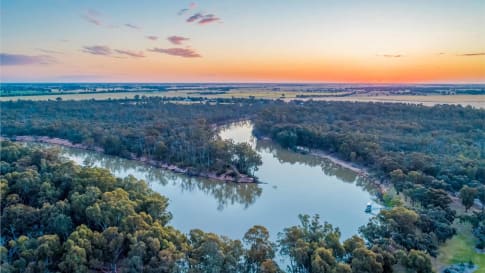
Appreciating Australian River Systems
Appreciating the linking of the river network into the Australian, history, culture and landscape on a small group tour for mature and senior travellers of couples or solo travellers is an integral part of understanding the continent of Australia and Aboriginal settlement.
Canberra Museums and Galleries
Canberra Museums and Galleries As you probably already know – Canberra, Australia’s capital, is the epicentre for Australian history, culture and politics, home to various museums and galleries. The Australian War Memorial and the National…
Questions about Australia for senior travellers
Questions About Australia for senior travellers Odyssey Traveller specialises in crafting unforgettable experiences for senior and mature-aged travellers interested in learning as a couple or as a solo traveller when they travel. Providing adventure and…
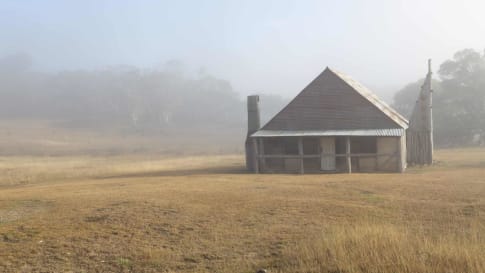
The Australian Alps Walking Track
Escorted small group tours for seniors and mature couples or solo travellers seeking to learn and participate in journeys to learn and see the history, culture and landscapes of Australia.

Uncovering the ancient history of Aboriginal Australia
For small group escorted tours of Australia in Queensland, Victoria, New South Wales, South Australia, Tasmania, Western Australia and the Northern Territory a guide on Aboriginal culture for mature and senior travellers.
A small group tour of Australia is a journey between cities with up to 250 years of settlement history and an outback, which has some of the oldest known geologic material on earth. But importantly, it has one of the longest and truly fascinating known periods of human settlement. Indigenous Australians settled via a land bridge on the continent from Southeast Asia at least 85,000 years before the first Europeans from Portugal and Spain began exploration in the 17th century. For senior and mature travellers, a small group tour of Australia is a unique experience.
A country the size of America, with one of the longest coastlines in the World, where some 80% of the population lives on Australia ‘s east coast, separated from the outback by the low mountains of the great dividing range. Australia ‘s geographic diversity, in landforms, flora, and wildlife, is part of its charm, providing the back drop for a small group adventure in the winter period . Whilst the Great Barrier reef, Kangaroos and Koalas are well known, the biodiversity in the native Australian wildlife on any escorted tour complete witha local guide into the outback is amazing. Though the biodiversity present is often missed until a good tour guide or travel expert shares their knowledge with you as you travel often on a epic journey across one of the world’s most beautiful and fascinating countries. Australia across the outback and in a national park such as Purnululu national park , the Blue Mountains , Kuku Yalanji, the Great Barrier reef and Kata tjuta accounts for some 10% of the Worlds biodiversity, on any tour of Australia travellers will often see wildlife ready to be photographed.
Reaching your Destinations
Travel is a challenge as once you leave the major cities of Sydney, Melbourne or Brisbane on a trip by car or an escorted tour by coach, the sheer scale of the Australian outback begins to reveal itself as the journey unfolds. It is a scale often unrecognised when flying to Cairns or Port Douglas from Sydney to explore a UNESCO world heritage site like the Daintree rainforest or the Great Barrier reef in far North Queensland. You may arrive in Cairns in less than 3 hours by plane, but on the road, through the outback, this journey for a tour group is an adventure , that will run for a few days. A road trip often described as an epic journey, that requires planning and destinations selected in advance. The same rules apply for the journey to Alice Springs and Uluru ( Ayers rock ) in the Kata tjuta national park, from Sydney. This trip passes through another UNESCO world heritage site of the Blue mountains. Farmland and rural towns disappear as the drive takes you towards the Northern Territory, three thousand kilometres away. Uluru Ayers rock, it is desert and it is the Australian outback! The journey to and from Uluru to Sydney is 6 days of driving, via Alice Spring , with very little in between, just the outback. The scale of the outback and the hidden history can often be missed on a journey in a car. When you travel as part of a small group tour of Australia with Odyssey, your tour guide, whether on Kangaroo Island, in the Northern territory or on a day tour within Western Australia deep in the Kimberley, will be sharing stories with you about the Australian wildlife and some of world’s most beautiful dreamtime stories from the indigenous Australian community as you journey through the outback at time immersed in Aboriginal culture. For you our client, our discovery Australia tours seek to create programs of learning as your travel.FAQs
What is the best way to tour the Australian Capital Territory?
.
What are the best places to visit in the ACT?
The serene unhurried and purpose-built and planned capital, is located around the attractive artificial Lake Burley Griffin. Some of the major landmarks are the old Parliament House, the traditionally designed Parliament Building and the Australian War Memorial. Canberra is home to the National Art Gallery and National Museum which are worth visiting.
What is the best way to get to Australia's capital, Canberra?
Australia’s capital city is Canberra, some 4 hours by road from Sydney and about 6 hours from Melbourne.
You can arrive by plan, car, bus or train to the Australian capital city.
Touring the Australian Capital Territory
The need to know
Getting around
Odyssey travels by coach and occasionally uses local transport, including trains and ferries. Specifics for your ACT trip are always outlined in your tour itinerary. Bus services are widely available, with long-distance buses and shuttle buses providing services across the country. The train services are somewhat more limited in terms of transportation coverage, though remain a comfortable and very scenic way of getting around Australia and to the ACT.
Accommodation
Odyssey stays in centrally located 3-4 star hotels, with easy access to public transport and local amenities so you in your down time you can enjoy the city like the locals.
Tour guides
Odyssey always engages local guides with regional knowledge to ensure an authentic experience during which you can learn as much as possible about the history and culture of places you visit.
Geography, Environment, & Weather
.
Festivals & Events
Australia’s capital is home to many festivals throughout the year. From Floriade, Summernats, the National Folk Festival, National Multicultural Festival to Enlighten and many more.
Reading list
The Architecture of Walter Burley Griffin, by Donald Leslie Johnson.
Canberra Following Griffin: A design history of Australia’s National Capital, by Paul Reid and Robert Bell.
A History of Canberra, by Nicholas Brown.
Dark Emu: Aboriginal Australia and the Birth of Agriculture, by Bruce Pascoe.
Eating & Drinking
Canberra offers travellers an great choice of restaurants and cuisines. The city is home to award winning restaurants, amazing cafés and nearby vineyards with cool-climate wines.
Health & Safety
Generally speaking, Canberra is safe to travel in, though always exercise common sense while travelling.
Electrical Supply
Whenever you travel overseas, it’s always wise to take an appropriate travel adaptor. The electricity supply in Australia runs at 230V and 50Hz. Australia uses the Type I electric plug, so make sure you have the right travel adaptor with you.
Highlights
The best of the Australian Capital Territory
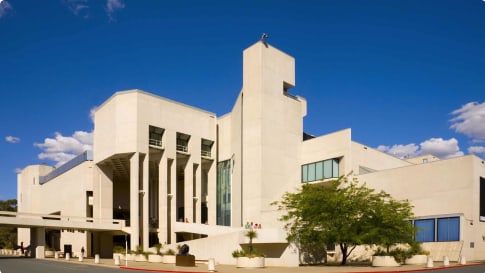
The National Gallery
.
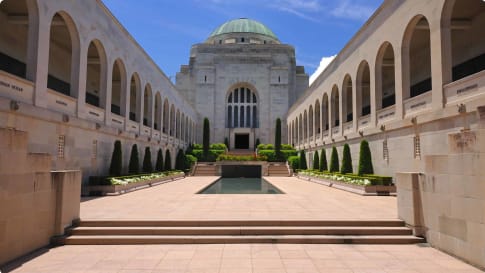
Australian War Memorial
.
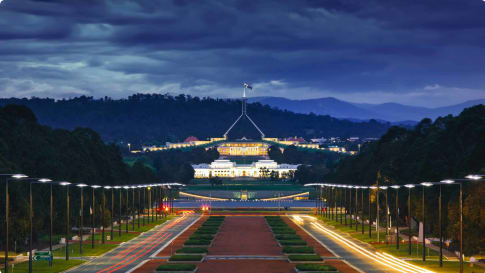
Australian Parliament
.
Responsible travel tips for Australia
- Before departing, make sure you have a number of AU dollars in a range of denominations. You don’t want to be carrying around enormous amounts of cash, but take enough to make it easy to pay in locations that might not accept credit card. It will also help you avoid card transaction fees, and it makes tipping a breeze.
- Carry a card in your wallet or purse from your local hotel, to assist you with the return journey if you do become lost.
- Always ensure that you are covered by travel insurance. If you need advice on this feel free to contact Odyssey and we’ll be able to help.
- Before departing, make sure you have a number of AUD in a range of denominations. You don’t want to be carrying around enormous amounts of cash, but take enough to make it easy to pay in locations that might not accept credit card. It will also help you avoid card transaction fees, and it makes tipping a breeze.
- When travelling independently, make sure you check the opening hours of shops and museums so that you don’t miss out! Also be certain to check whether your trip coincides with any public holidays, so you can plan accordingly.
- Before departing on your trip, contact your bank to inform them that you may be making purchases overseas. Otherwise, they may flag any activity on your account as suspicious. Also, check which ATMs and banks are compatible with your cards, to ensure you can withdraw cash with minimal fees.
